Connecting the Human and Non-Human Experience
If you work with or care about animals, the nonhuman ones, eventually, someone will say something like, “shouldn’t you care more about what happens to people?” That question doesn’t faze me anymore. Given our predominantly human-centered world view, I’d actually be surprised if people didn’t ask it.
My top four [anthropocentric] responses are:
- What happens to the planet happens to us. There’s no getting around the interconnectivity issue.
- All works on behalf of others, humans or nonhumans, contribute to an overarching paradigm of global caring. I don’t think we can diminish the power of accrued compassion.
- Everyone is born with their own proclivities. I think it’s in my DNA to care about nonhuman species, because I cannot recall a time when it wasn’t so. If everyone acted on the one most important issue in their own lives, the world would see much less longing in areas of both human and nonhuman suffering.
- The people I’ve known through my work with animals are also often those who will drop everything to help other human beings. Empathy does not imply exclusivity.
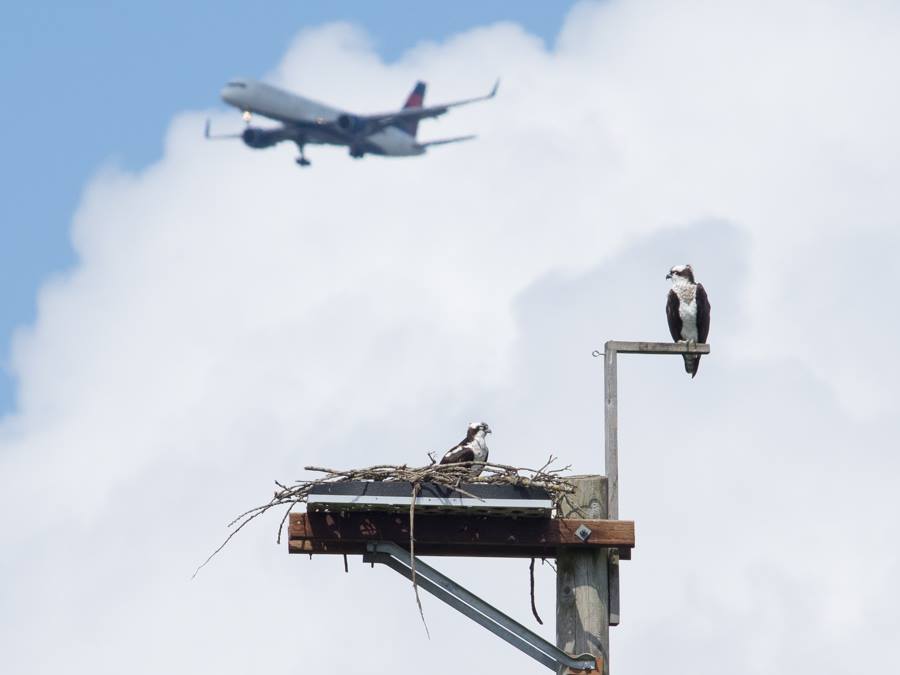
Osprey pair nesting under flight path on the Duwamish in Seattle
So, I have those answers.
What I’m challenged with, as a photographer and writer, is effective ways to change the model through which humans view the natural world. What is the best way to translate what I see and experience, into something visceral and tangible that might crack the veneer of that prejudice? And how do you take what, to many, is an abstract concept of a feathered animal, and infuse it with the richness and complexity we know is that animal’s existence?
Those questions frame everything from the subject and compositional choices I make, to my field experience, and how I represent for wildlife in public.
You know the adage … people will protect what they care about. Sometimes getting people to care is as simple as making an emotional connection between our experience and the experience of another.
Ospreys and Human Stories
Here’s an example. The other day, I was photographing an Osprey from a public walking trail near Seattle. I was shooting across a river at 600mm equivalent, so, the Osprey are at a safe distance for viewing and used to human trail walkers.
The male Osprey was eating his fish on a utility pole, where a hungry crow decided to move in for a handout.
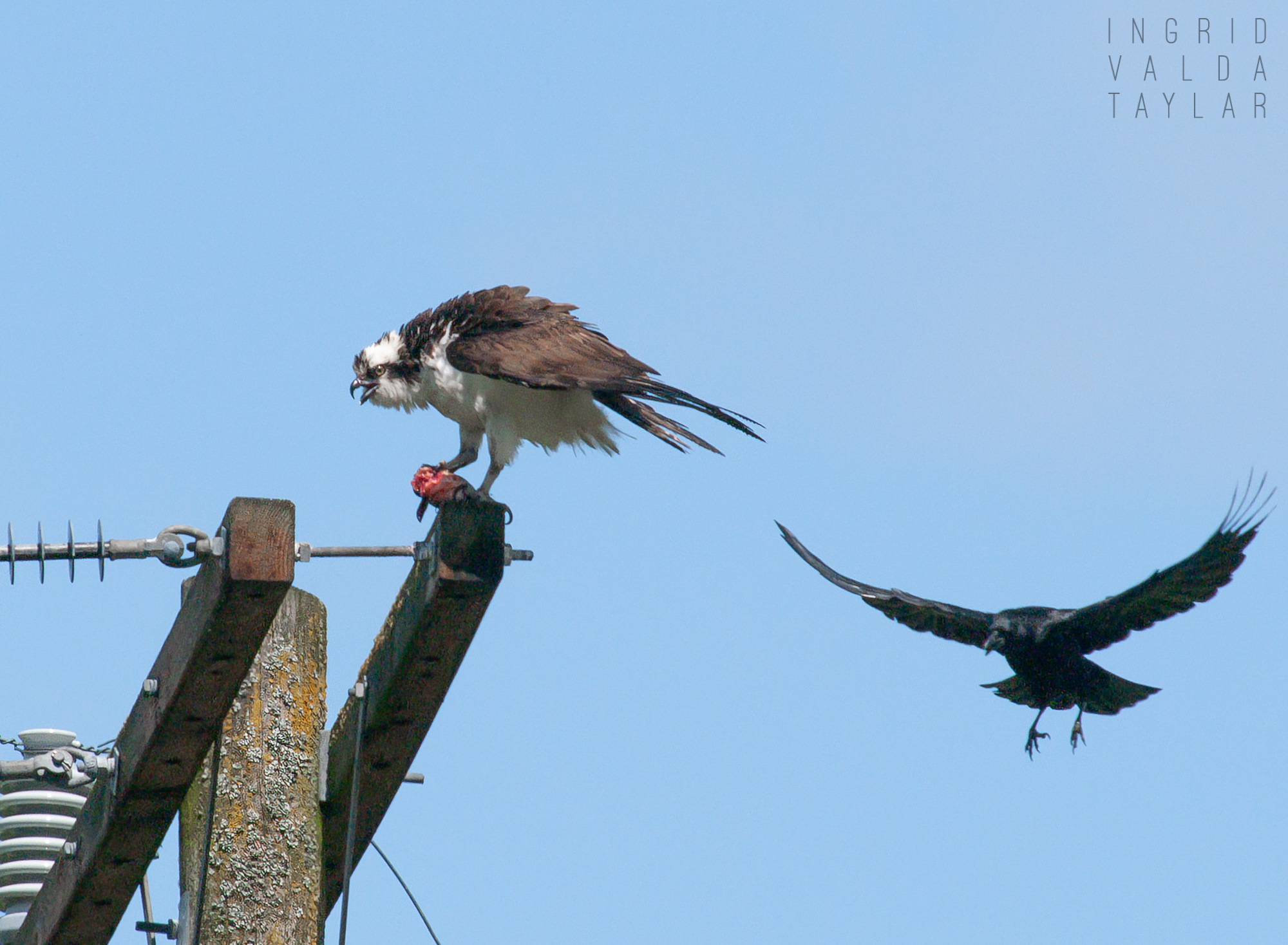
After the crow arrived, the Osprey sat on that fish, without eating, for almost a half hour, as weather changed from blue to gray and blue again.
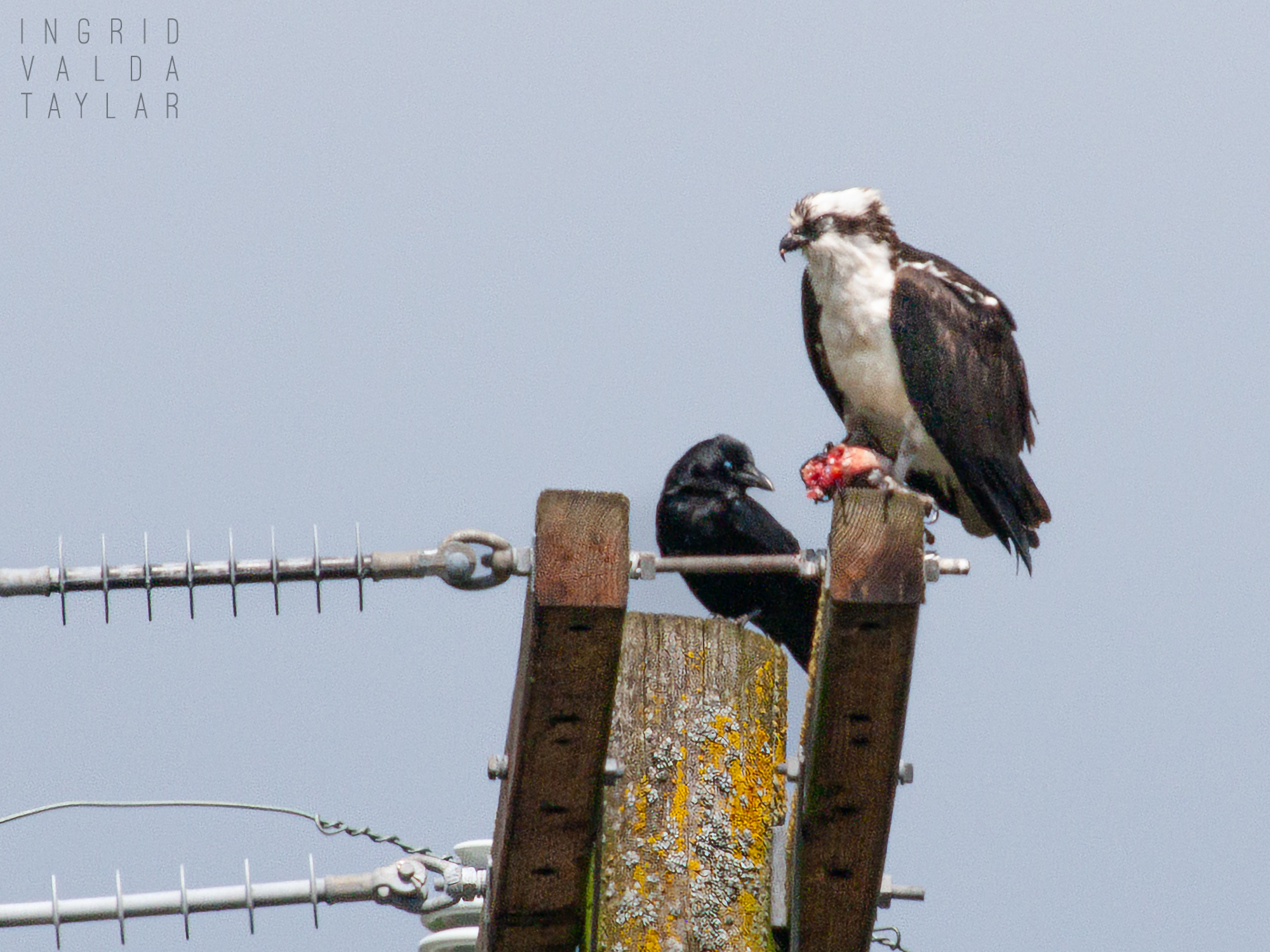
Meanwhile, the hungry female Osprey called incessantly from the nearby nesting platform. The male finally flew over with the remnants of the tail, which she swallowed whole, mumbling the whole time.
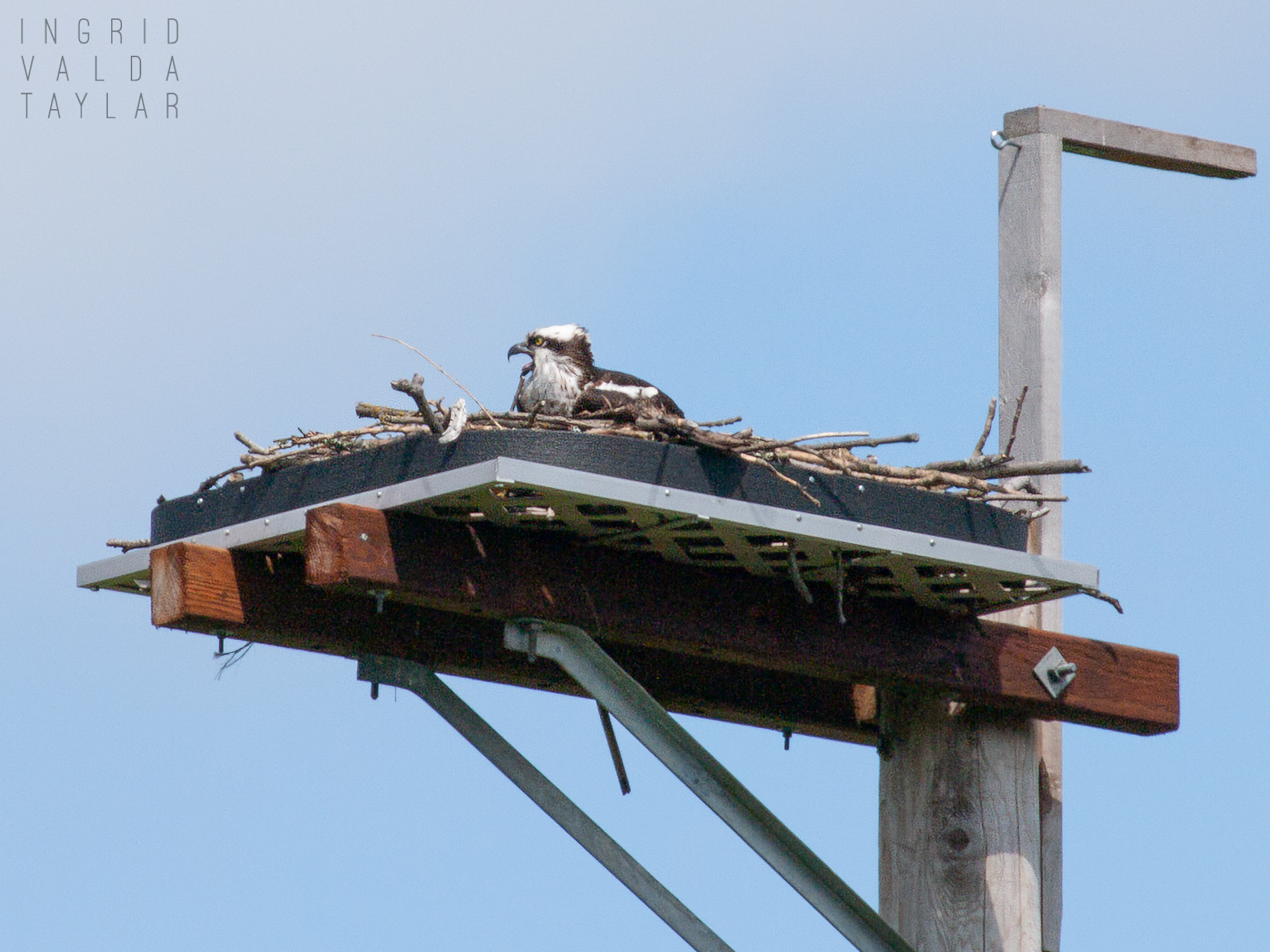
A wildlife lens tends to be a magnet for conversation. The area around the nesting platform is surrounded by office parks and secure business installations. So, nearly everyone walking by was wearing a credential or lanyard. And, I would say 99 percent of them stopped to ask me questions about the Osprey.
The first question was usually, “are those eagles?” The next most popular was, “is that a baby crying in the nest?”
I’m not an Osprey expert, but I explained what I’d been watching — how the female was crying out from the nest for the male who had the food. One person said, “so, they have domestic issues just like everyone,” and another, “just wait ’til the kids come.”
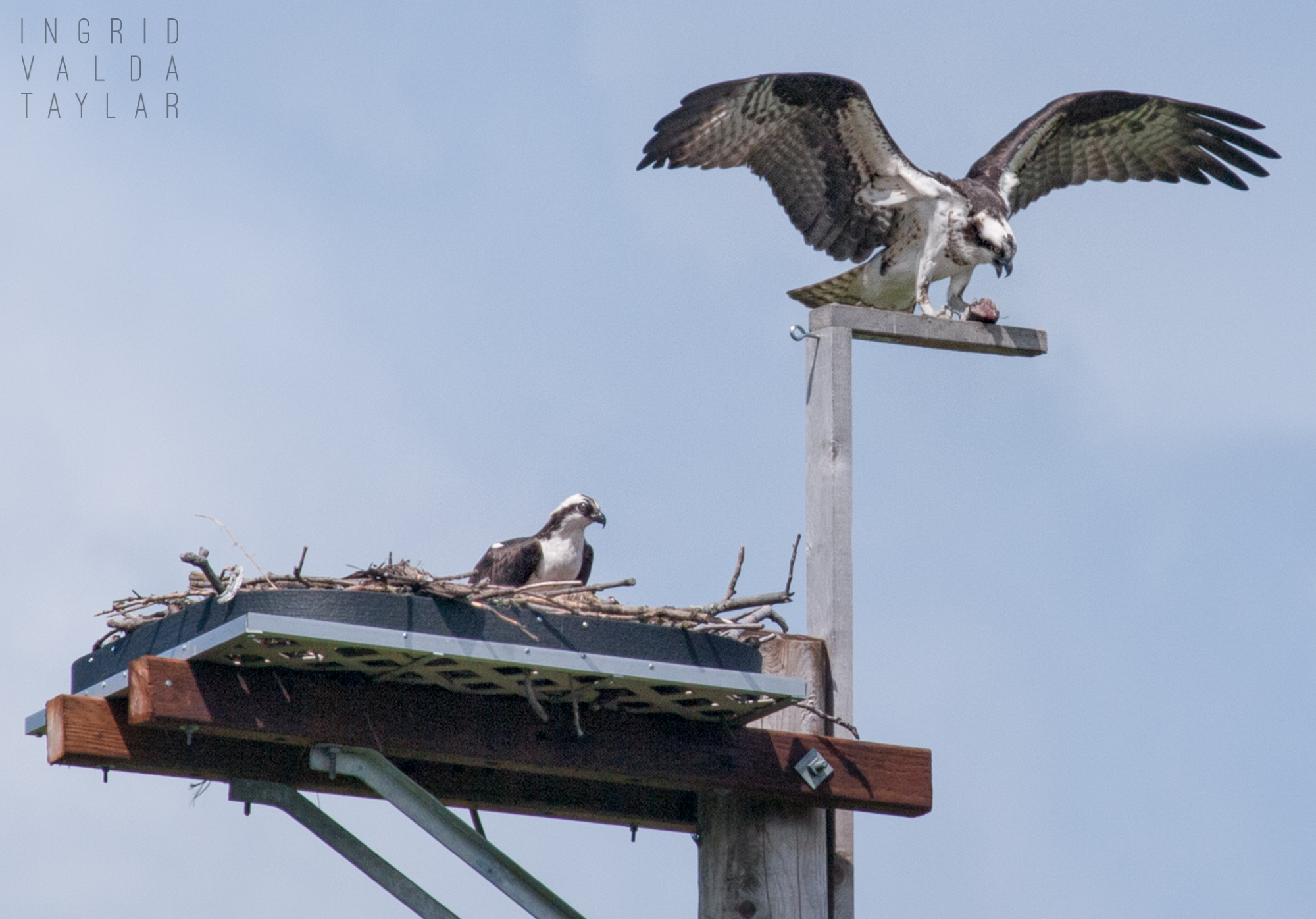
In some circles, this would be red-alert anthropomorphism. I mean, I was trained to say “aesthetically pleasing” instead of “cute” when referring to abjectly cute animals. And clearly, I realize that an Osprey’s home life doesn’t come close to mine — except for the fact that we each live in small apartments.
But, I also believe that when those people walk by on their lunch hour now, they will be looking at the Osprey through a different filter. They won’t be looking at the silhouette of bird with no personality. They’ll be extrapolating some of what we talked about, onto that distant form calling out from the nesting platform. They’ll see the Osprey unit as a family — not as a wildlife resource (which is obviously a lot easier to objectify).
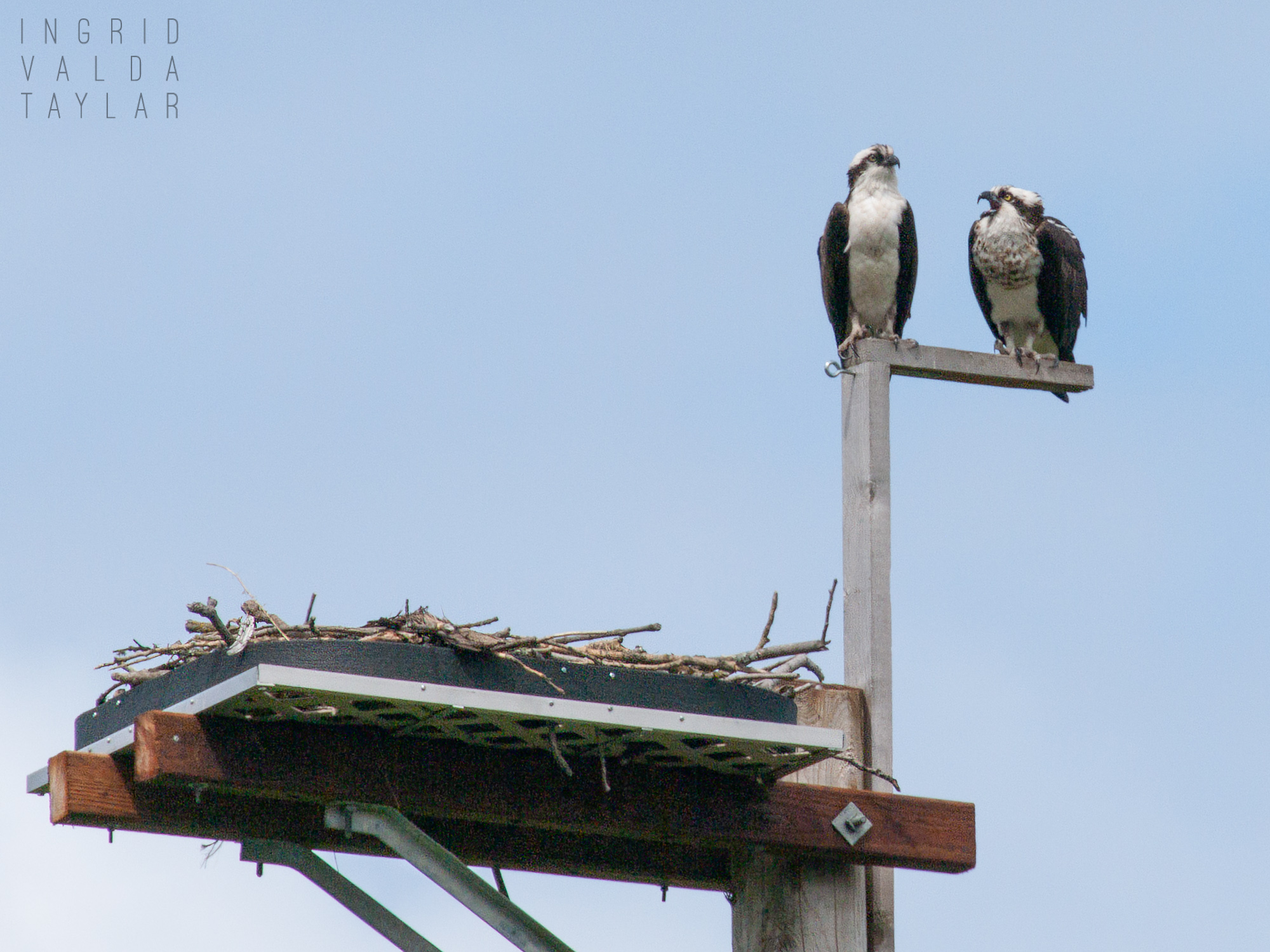
I understand why cautions about anthropomorphism exist. It’s as inaccurate to apply our preferences onto another species as it is to deny that species their full social and emotional lives. As I note on my ethics page, “I don’t believe in stripping an animal of its individuality and personality simply because he or she is not human. We share some traits with non-human animals, and I respect that similarity as well as an animal’s unique and rightful entitlement on this planet.
I love biologist Marc Bekoff’s term deep ethology: ‘Respecting all animals, appreciating all animals, showing compassion for all animals, and feeling for all animals from one’s heart.'”
I’m not sure how one comes to feel “from one’s heart” without some degree of personal association and empathy. It’s difficult, at times, to create that association through a two-dimensional image. But I think the stories we can tell through those images and around those images go a long way toward breaking down the damaging “us versus them” methodology of species interaction.

Great post Ingrid.
I would like to think our photography does connect people with nature.
One thing I’ve discovered, Mia, is that the camera acts as a great deterrent for harassment, too. Often, all I have to do is point the lens at a situation that’s looking bad, and the people will back off.
[…] Burien Ospreys, the Normandy Park Ospreys, the West Seattle Ospreys, the Terminal 91 Ospreys, the Duwamish Ospreys, the Ballard Ospreys … all following the impulses that only Ospreys ascertain, riding north […]